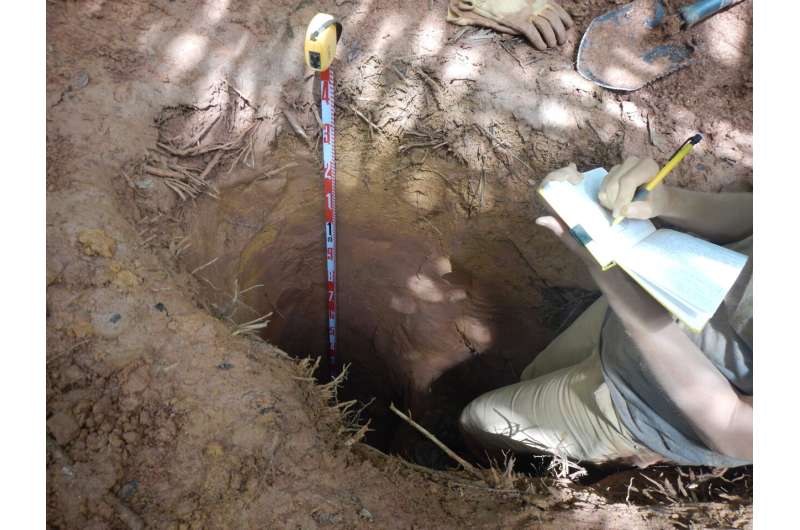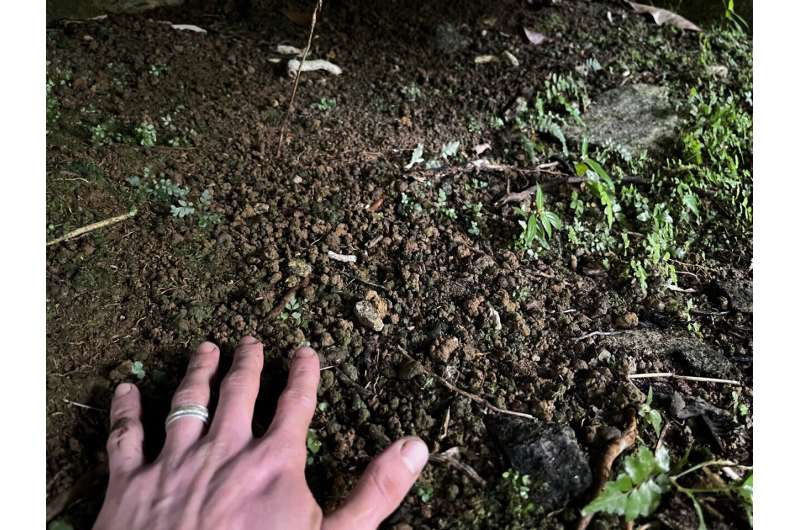This article has been reviewed according to Science X's editorial process and policies. Editors have highlighted the following attributes while ensuring the content's credibility:
fact-checked
trusted source
proofread
The earthworm effect: Unraveling soil weathering dynamics

Earthworms, the hardworking invertebrates that grace the upper layers of soil, have long been considered helpful in our home gardens. Earthworms are prolific munchers, grinding up organic material and sediment grains that make up soils. Although they are very different animals, worms, like many poultry, have gizzards.
"Worms will ingest some larger soil grains, and then they use the strongest and largest of those grains, retaining them in their gizzard," explains Adrian Wackett, a soil science doctoral student at Stanford University. These gizzards are great for breaking down soil to release nutrients.
While earthworms may benefit your garden or compost pile, they can be invasive and potentially cause damage to natural ecosystems. Physical weathering (or breaking down rocks or sediment into smaller pieces of the same material) of soils by worms has implications for soil processes, including how much organic matter and nutrients a soil can hold. By breaking down sediment, worms also create new soil textures which can impact how water soaks into soil and affect chemical processes.
Weathering is also a big factor in carbon dioxide cycling. "Geologists often think about weathering rates being one of the major factors that controls Earth's 'thermostat'," says Wackett. Chemical activities, including the sequestration of carbon into new minerals, are aided by the worms grinding up minerals. But earthworms also break down organic material, releasing carbon dioxide into the atmosphere.
Wackett wondered how much mineral weathering earthworms could produce. In new research presented Wednesday at the Geological Society of America's GSA Connects 2023 meeting, Wackett and his colleagues will demonstrate the invasive expansion of earthworms—or "global w'o'rming"—triggers a significant amount of silicate breakdown.
To better understand how worms break down sediment, the team examined soils in the El Yunque National Forest in Puerto Rico. They found significant changes in sediment sizes within the soil column, with smaller median particle sizes in areas where earthworm burrowing occurred. In fact, quartz grains in the worm-bioturbation zone were nearly 50% smaller than those grains without worm activity.

While other shorter-term laboratory experiments have been done on worm weathering, this is the first study on worm-induced silica breakdown of in situ soils. The team found that worms cause roughly 2% of the total weathering in El Yunque soils. Wackett adds that this is a conservative estimate for worm-weathering and points out that worms could be an even more forceful weathering mechanism than these initial estimates show.
Weathering rates could proliferate by the spread of earthworms into new territories. Wackett notes that earthworms are making their way into northern latitude forests that didn't have worms in the past.
The team assessed grain size changes across a series of soil profiles spanning earthworm invasion gradients in Alaska, Minnesota, Finland, and Sweden where the timing of earthworm arrival––and hence worm weathering––is more tightly constrained. They noted appreciable shifts in median particle size in these historically worm-free sites.
Wackett concludes although each worm produces "small changes, once you scale up, you actually come up with pretty sizable [weathering contributions]."
More information: Presentation. gsa.confex.com/gsa/2023AM/meet … app.cgi/Paper/393829
Provided by Geological Society of America



















